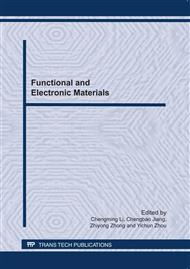p.750
p.756
p.759
p.765
p.771
p.778
p.784
p.791
p.798
Tribological Properties of Hydrogenated Amorphous Carbon (a-C:H) Films on Aluminium Alloy Substrate under Different Substrate Bias Voltages
Abstract:
Hydrogenated amorphous carbon (a-C:H) films were deposited on aluminium alloy substrates by microwave electron cyclotron resonance chemical vapor deposition(ECR-PECVD) at different substrate pulse bias voltage. In order to enhance the interface bonding strength between the film and Al alloy substrate, a 50nm silicon film was firstly fabricated on aluminium alloy substrate by unbalanced magnetron sputtering. The fiction and wear properties of the a-C:H films were evaluated using a ball-on-disk tribometer in air at room temperature. The results showed that the tribological properties of the a-C:H films decreased with the substrate bias voltage increased from -150 to -1000V. The a-C:H films deposited at -150V bias voltage had the best wear resistance.
Info:
Periodical:
Pages:
784-790
Citation:
Online since:
June 2011
Price:
Сopyright:
© 2011 Trans Tech Publications Ltd. All Rights Reserved
Share:
Citation:


